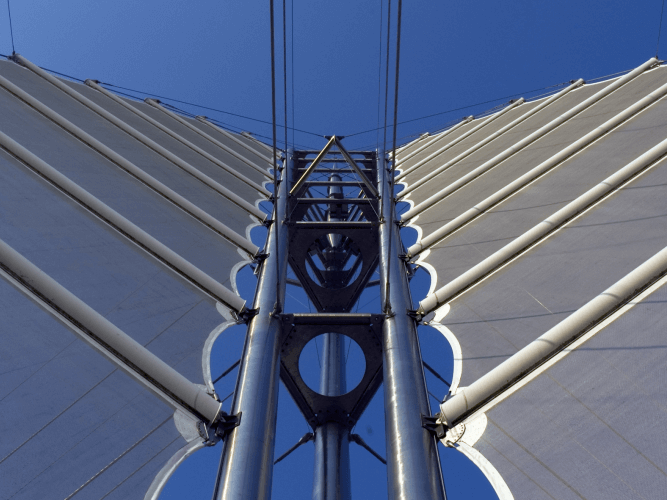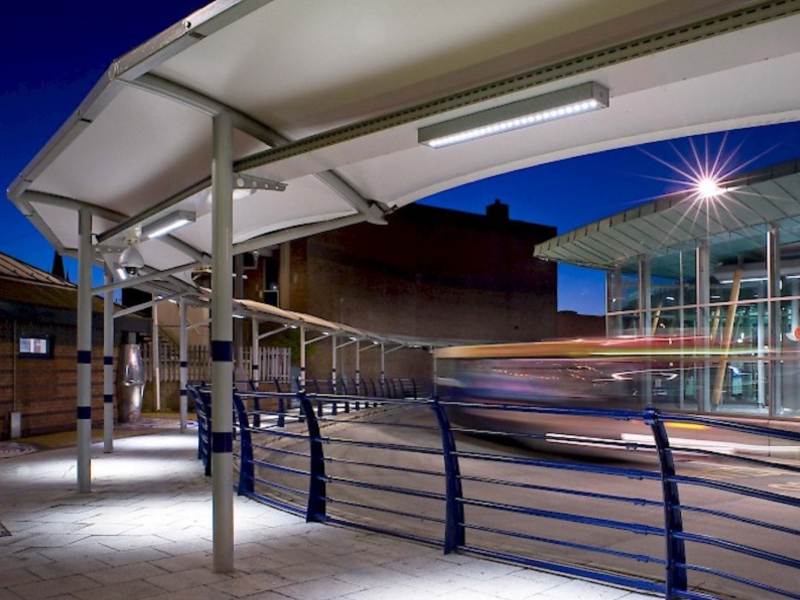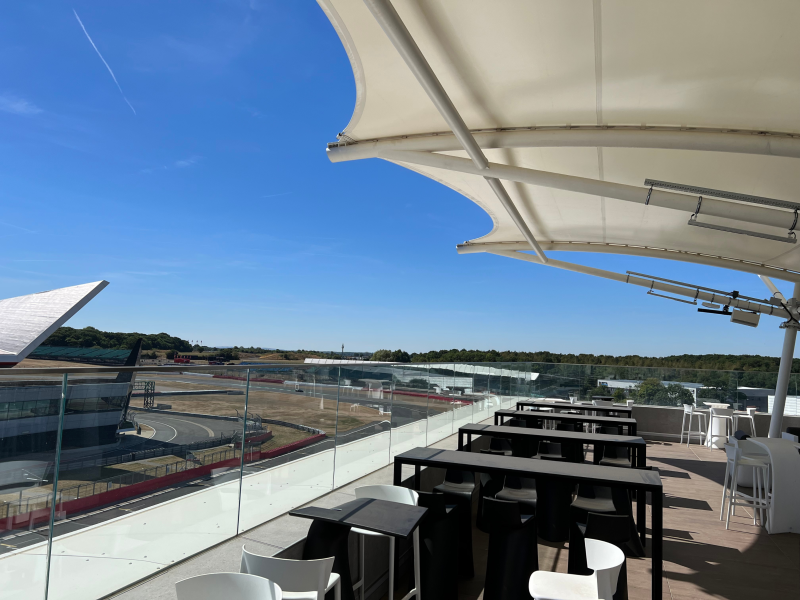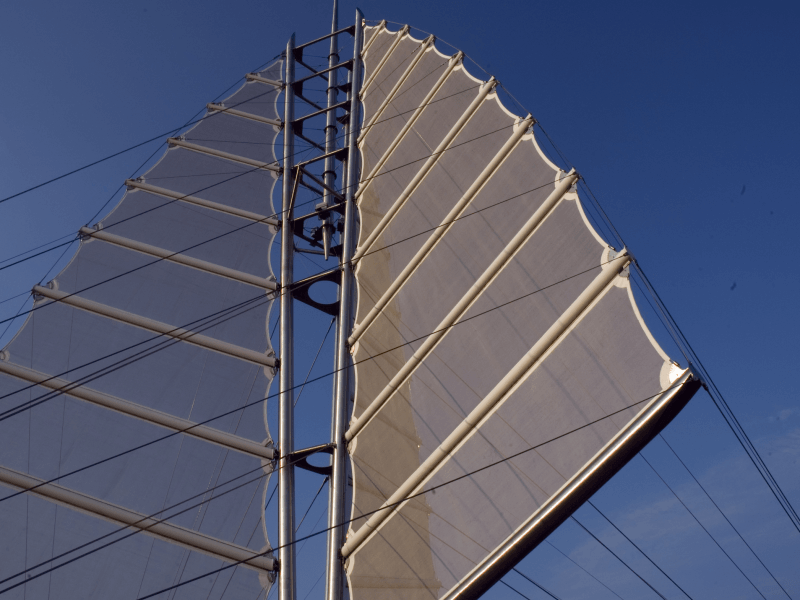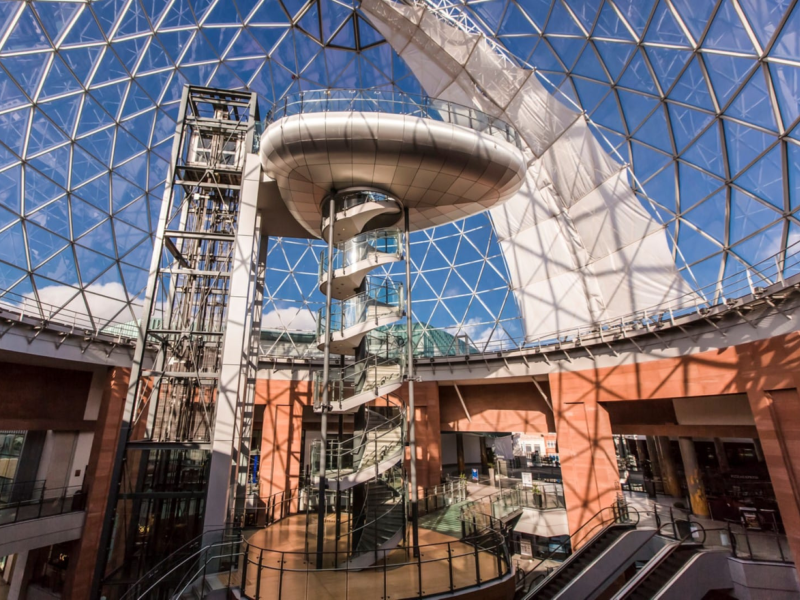What is a Tensile Fabric Structure?
Tensile fabric structures are characterised by the tensioning of a membrane system, typically with wire or cable. Using tension throughout structure provides the membrane with critical structural support. Tensile architecture is the most common form of thin-shell structures.
Tensile structures (otherwise known as tension structures) can hold many forms although it is generally based on two basic building designs; the Saddle and the Cone. This creates dramatic structural architecture and offers a variety of free form designs. The tensioning of the fabric eliminates and creases in the membrane and is strong enough to withstand any severe weather and potential damage.

When to use a Tensile Fabric Structure?
Tensile membranes can be used in a variety of situations. They use less material than traditional structures and as a result, weigh less and are easier to transport. They are flexible, robust and can be tailored to your exact requirements. As well as being practical, tensile fabric structures are a showpiece feature that offers an impressive local focal point.
Where to use a Tensile Fabric Structure?
- Tension structures can be used as a showpiece element that stands out against both traditional and modern buildings, urban focal points and local icons.
- Membrane canopies are ideal for wide column-free areas. The structures can span unsupported lengths of up to 150 feet and up to twice that amount with steel cable nets, and air structures can span thousands of feet without columns!
- Our tensile structures are great for temporary buildings, from schools and education centres or travelling exhibits.
- Need a prefab modular building? Our metal-framed tensioned structures are the most cost-effective modular frame buildings available.
- Tensile structures are brilliant, lightweight additions to existing buildings and can act as canopies, skylights, sheltered walkways, shaded areas or atrium roofing.
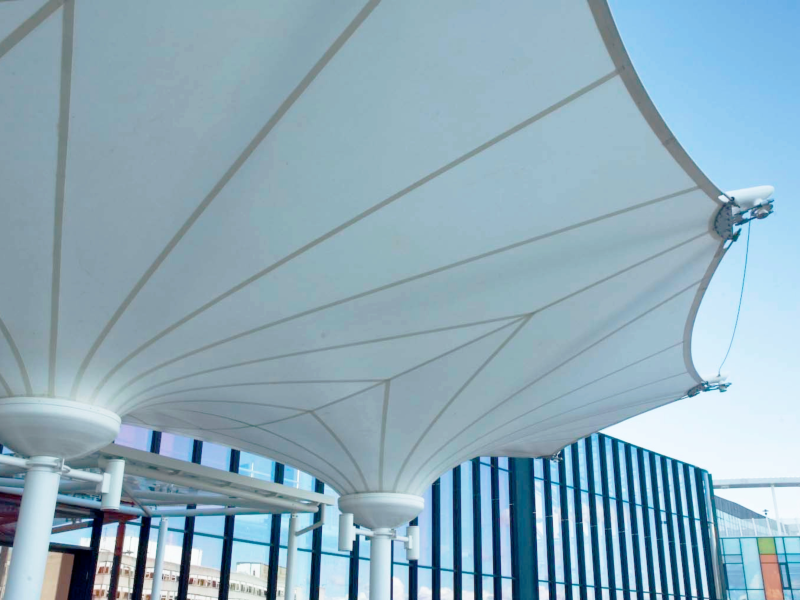
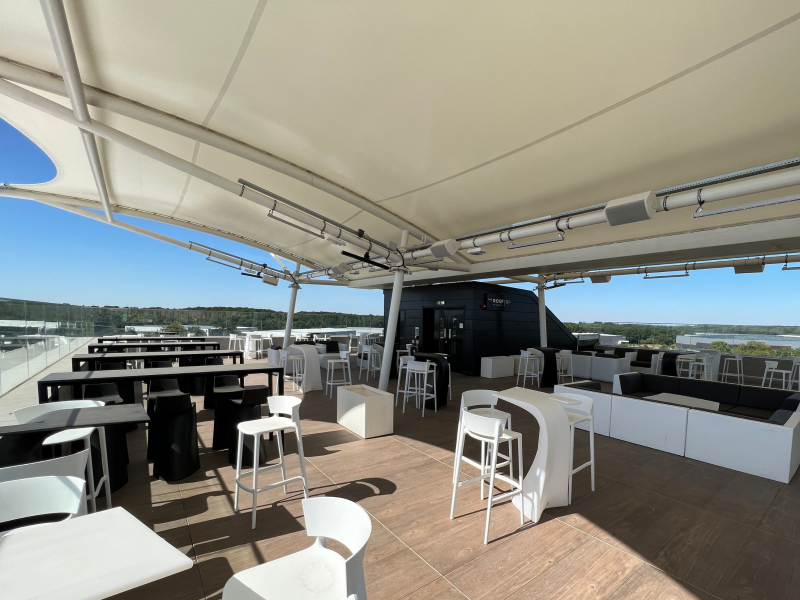
Can any shape be created?
As previously mentioned, tensile fabric structures are based on two basic building blocks of tensile structures. However, this is not to say that they are not versatile. The beauty of a tensile fabric structure is the ability to design and create them around your specific requirements.
Every canopy uses the curves and principles of either the Saddle or the Cone, or combines elements of both. The Saddle is a hyperbolic paraboloid which means that it is a surface made of two high points and two low points. The geometry of the surface is orthogonal or made by the warping of a rectangular grid.
The Cone is like a volcano shape using a radial geometry created by radians and hoops to create surfaces. These two forms can be combined to create an infinite number of permutations much like the circle and the square with classical architecture.
What fabrics are used?
All fabrics will stretch when pulled in opposite directions to create tension however, some fabrics exhibit different characteristics. There are currently four types of fabrics that are used today for tensile fabric structures:
PVC Coated Polyester Fabric
This is a cost-effective fabric having a 10 to 20-year lifespan. It has been used in numerous applications worldwide for over 40 years and it is easy to move for temporary building applications. PVC meets B.S 7837 for Fire Code.
PTFE Coated Glass Fabric (permanent structures only)
This has a 30-year lifespan and is completely inert. It does not degrade under ultraviolet rays and is considered non-combustible by most building codes. PTFE meets B.S 476 Class 0 for Fire Code.
ETFE Foils (permanent structures only)
This is used in inflated pillow structures where thermal properties are important. The foil can be transparent or fritted much like laminated glass products to allow any level of translucency.
PVC Glass Fabrics
This material is used for internal tensile sails, such as features in atriums, glare control systems, with a minimal need for maintenance. PVC glass fabrics meet B.S 476 Class 0 for Fire Code.
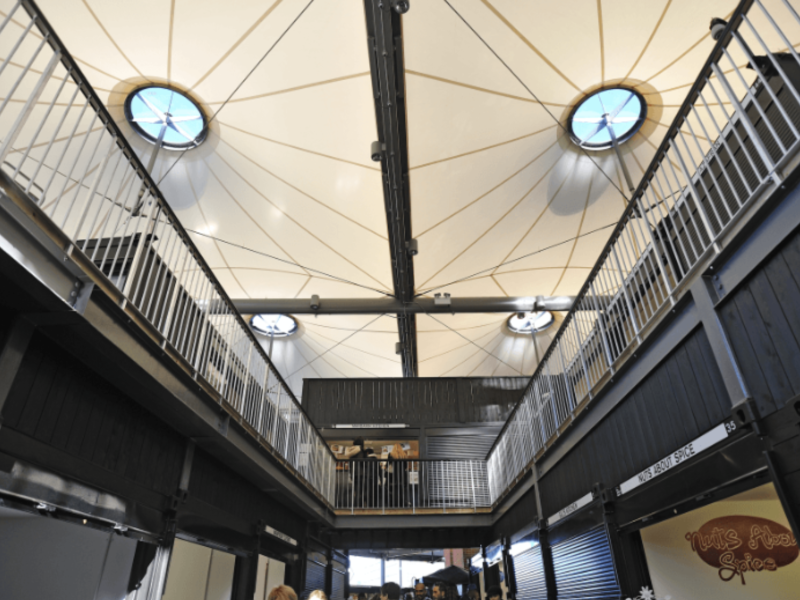
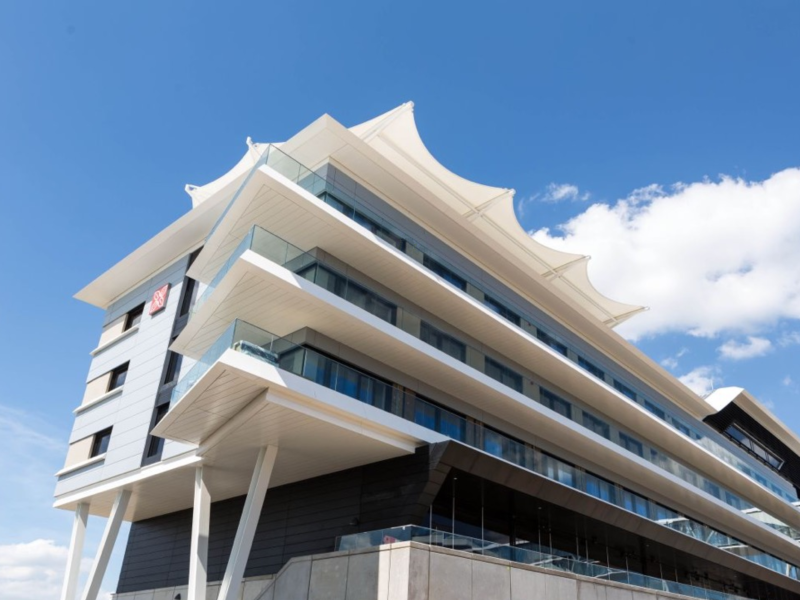
Are tensile structures environmentally sustainable?
Tensile structures generally use light coloured roofs to reduce the heat that is attracted. They use very small amounts of material for large spans; they allow for natural ventilation using the Venturi effect and they provide translucency for natural daylighting. PVC polyester, expanded PTFE, polyolefin fabrics and ETFE foils can be recycled by the supplier for lower grade applications.
How much do tensile structures cost?
The cost of installed custom tensile structures can range from £200.00 to £800.00 a square metre.
This includes structural supports, cables and fittings, but does not include foundations which are dependent on local soil conditions. Costs vary due to the complexity of the design, local wind or snow conditions, quality of materials and connections, and area of structure required.
Standard frame structures with tensile membranes can be as low as £100 a sq.m installed and air structures can range from £80 to £160 a sq.m installed. Air structures do need continuous air support and as a result, have higher operating energy costs than tensile structures.
